SPIRE
JOURNAL OF HESSLE PARISH CHURCH
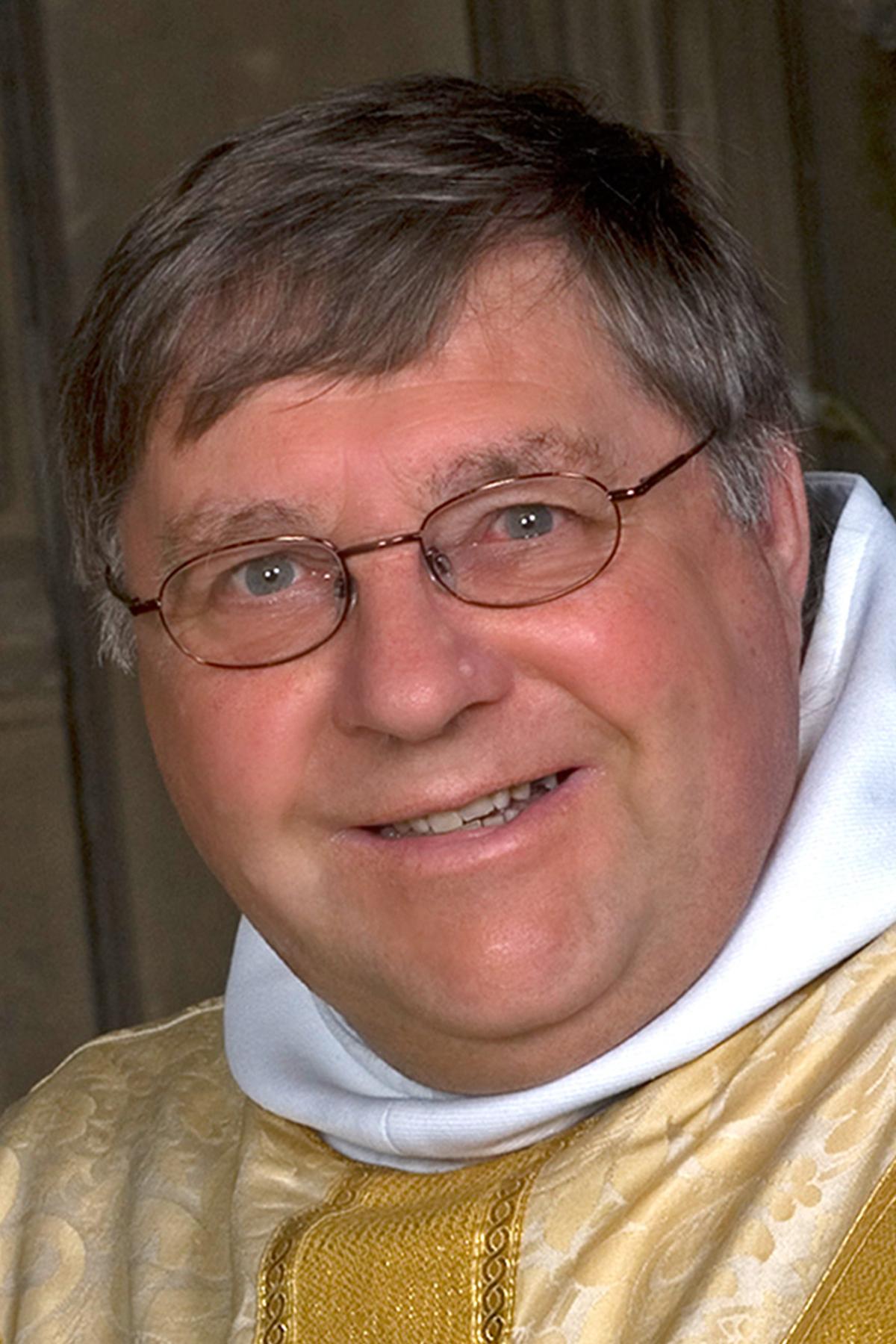
This year April begins with Easter Monday, when the penitential days of Lent and the intensity of Holy Week have led us from suffering to joyful celebration of resurrection. Here we encounter God’s response to human sin.
John’s Jottings
‘April is the cruellest month’, wrote the poet T. S. Eliot, opening his poem, ‘The Waste Land’. For him the month evoked a kind of awakening to painful memories, roots growing deep in human life.
As I write in March it may seem that every month has its cruelty as the horrors of Gaza and the Ukraine continue to remind us of the brokenness in our human condition. As much as we yearn for peace and harmony in the world our hopes are dashed with every new act of violence. And yet in the midst of the horror we continue to see acts of bravery and compassion; signs of hope that things can change. And we hear too the message of Easter.
It may be said that the power of the Easter story is found in the mystery of Our Lord’s saving death. Theologians speak of ‘atonement’ and use metaphorical images to seek understanding. In some sense the death of Christ is a sacrifice for sin, setting us free from sin and death. It is the cost of our freedom. It is a restoration of our relationship with God, broken by sin. It is a cleansing from guilt, a healing of deep wounds of separation within our humanity. It is a moment of our being restored to oneness with our Creator and His purpose. In this regard ‘atonement’ is ‘at-- one–ment’. It is a waking up to the love and mercy of God for us. But all of this is made effective by the resurrection of Jesus from the dead. The story of Jesus does not end with the cross but continues in his risen life and in the life of all who follow him.
The Easter message is that we can all be lifted up by the resurrection and be changed into ‘Easter people’ living with hope and expectation for goodness to prevail.
April 2024 Page 1
APRIL 2024
T. S. Eliot caught this note of expectation in his poem ‘Little Gidding’:
“With the drawing of this Love and the voice of this Calling We shall not cease from exploration”
May the light and joy of Easter be with you all.
John
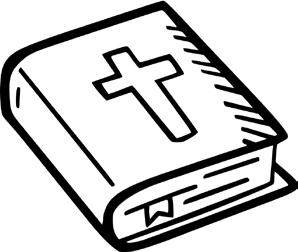
Job Vacancy
CommunIty of the hoLy nAme In hessLe
We have an opening for a casual relief cook and a casual relief cleaner to cover for staff holidays or sick absences.
Usual kitchen hours: 9 am – 2 pm (flexible)
This shift will either cover Monday and Tuesday or Wednesday to Sunday.
For more details contact
Sister Catherine CHN
assistantprovincialchn@ yahoo.co.uk or 01482 770345
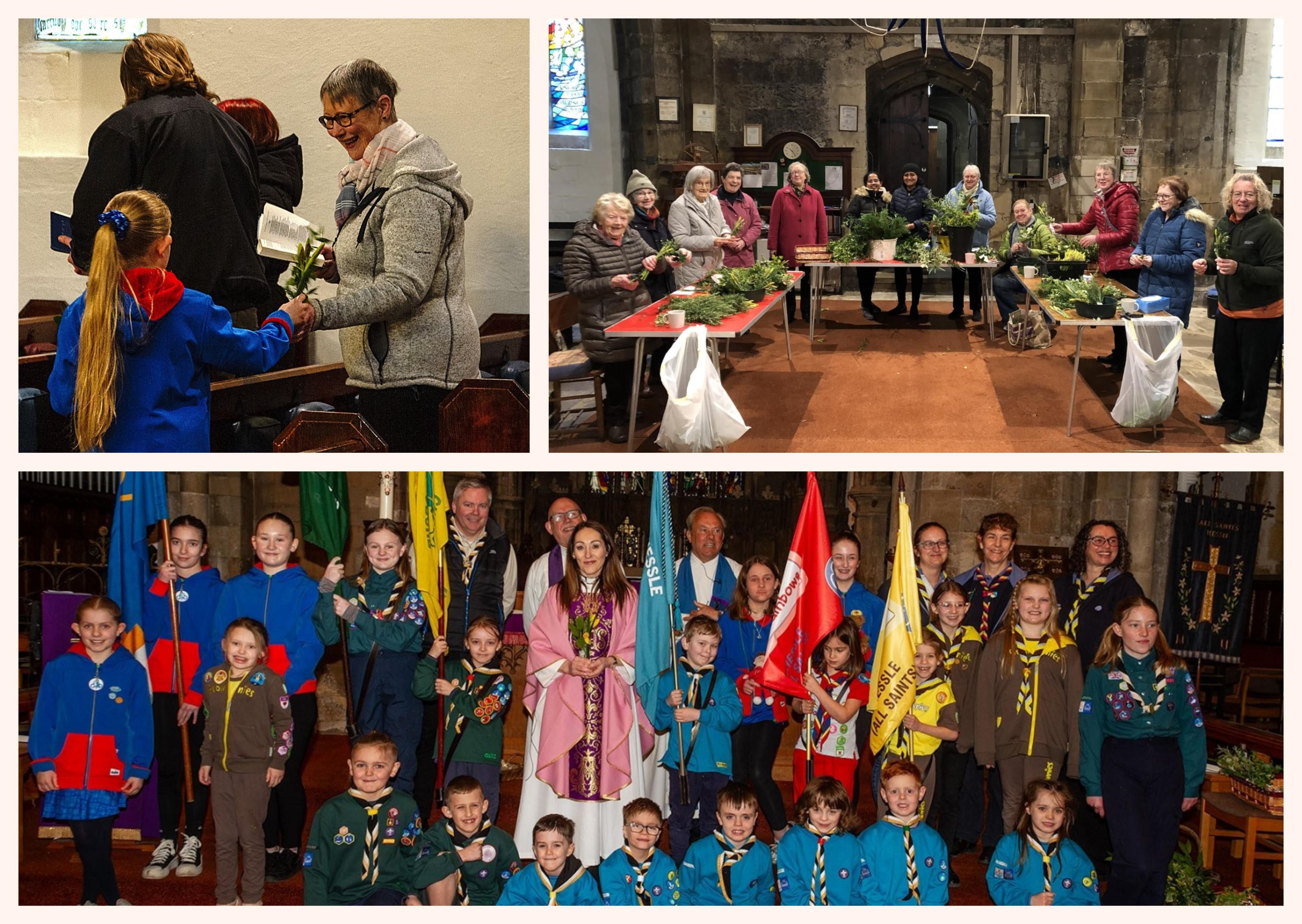
Page 2 April 2024
A happy band of volunteers made posies for the Mothering Sunday service held on the fourth Sunday of Lent. The posies were presented to all the ladies in the congregation by the uniformed organisations following the morning Eucharist.
Former
curate
mentioned in Church Times…
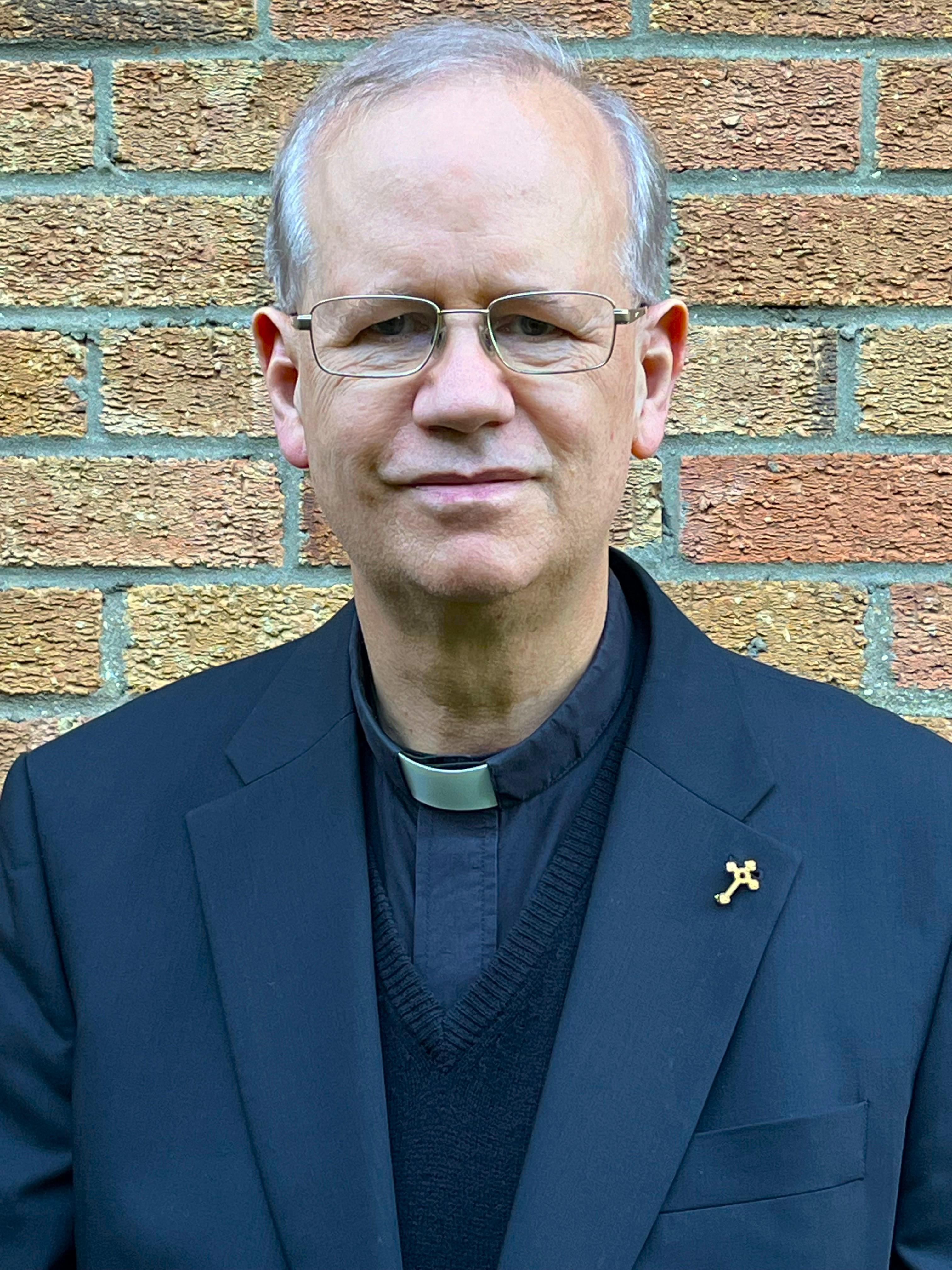
the Reverend stephen trott mA (Cantab) LLm fRsA
The Archbishop of Canterbury paid tribute to the Revd Stephen Trott for his 29 years of service to the Synod. The chronicle of his work as synodical secretary of the Convocation of Canterbury had been “close to being a fourth book of The Lord of the Rings”, a Herculean task that he had carried out in his own “careful, efficient and self-effacing way… a remarkable service of enormous persistence and patience.”
I contacted Stephen to ask what he had been doing since he left us as a curate back in the 1980’s and received the following reply.
“Dear Graham
How lovely to hear from you! I
often think with enormous affection about my time at Hessle, and wonder how everyone is getting on. Please pass on my greetings and all best wishes.
I have been Rector here since 1988, and in the course of that time I have been a member of General Synod 1995-2021, Synodical Secretary 2010-2024 and a Church Commissioner from 1997-2023. I have been an Army Chaplain since 2016 and I am also Lead Chaplain for Northamptonshire Police, which are my current interests, as well as becoming Diocesan Ecumenical Officer in 2022.
Since leaving Hessle, Caroline and I have been blessed with three children and two grandchildren, who all live near us here in Northamptonshire.
With all best wishes
Stephen
Rector of Pitsford with Boughton”
It is wonderful how ‘A Church Near You’ can get you back in touch.
Graham Marshall.
Parish Giving Scheme
14 April, we are pleased to be welcoming Phil McBride, Diocesan Generous Giving Officer, to our 10am Eucharist service.
Phil joined the team in York during April 2022. He brought with him his experience as a Treasurer
April 2024 Page 3
across several churches in the York area as well as his enthusiasm to help promote mechanisms to enable accessible giving.
During the service, Phil will introduce us to the Parish Giving Scheme (PGS). This is one of the modern instruments of giving that are being rolled out throughout the country. The scheme is an established service for managing giving, designed to support churches to fund their mission and ministry. It reduces the burden of work on church volunteers and provides a simple and secure service to givers.
The service is freely available to all parishes, their churches, and donors within dioceses that have chosen to participate. Uptake is growing every year, with most dioceses in the Church of England – and many of their parishes – now members of PGS and experiencing the benefits.
It is with much anticipation that we can look forward to Phil’s contribution at this Sunday service in April, with his expertise and energy, but most of all with his passion in helping to deliver Christ’s story in local places.
Please try to be there.
The missing apostrophe.
For some time now there appears to have been a campaign to remove the apostrophe from where it is required in “All Saints’” and “Saint James’”. Weekly bulletins, service sheets, service books, posters and even public notices outside the church have appeared divested of this important mark.
Whilst aware that standards of education have declined dramatically over the past 50 years, I feel that something must be done to preserve correct English in the Established Church.
For those who are in doubt about whether, or not, to use the apostrophe as required, there is a simple procedure – replace the title of our church buildings and parish with the name of a saint whose name does not end with “s” and follow the model.
St Mark Church, Anlaby Common - All Saints Church, Hessle? NO!
St Mark’s Church, Anlaby Common - All Saints’ Church, Hessle? YES!
The vicar of St John - The vicar of All Saints? NO!
The vicar of St John’s - The vicar of All Saints’? YES
The Parish Church of St Peter’s, York – The Parish Church of All Saints’, Hessle? NO
The Parish Church of St Peter, York – The Parish Church of All Saints, Hessle? YES
A meeting at St Peter - A meeting at St James? NO
A meeting at St Peter’s - A meeting at St James’? YES
We will leave for others the argument about whether we write St James’ or St James’s.
R J Brettell
Page 4April 2024
Hessle Community Centre minibus trips in September
Wed 17 July Lunch at Ranby and 2hr boat trip
Wed 14 Aug Pie & Chips Meal and 2 hr trip from Hollingwood Hub
Wed 11 Sept Starting with an hour or so in Chesterfield, for lunch (not included) or shopping. Then a 2 hour one-way boat trip with an afternoon tea on board.
For enquiries and bookings, phone Jill, the centre manager, on 646262 or visit the Community Centre on Monday, Wednesday or Friday between 9am and 12.30pm and ask to speak to Jill. If you need to cancel a trip could you please give 48 hours notice to receive a refund. Should the centre cancel a trip you will be notified as soon as possible and a full refund will be given.
100+ Club Winning Numbers

March Draw:
1st Prize: £21.00 - No. 25
2nd Prize: £14.00 - No. 101
3rd Prize: £7.00 - No. 63

Many thanks to all who have supported the club in 2022/2023 when £1518 was raised for the Tower Appeal and we wish you good luck in the next twelve months.
Thanks, Christine, Penny, Linda and Emma
April 2024Page 5
Date Destination Start time Price Mon 1 Apr Selby Market 10.00 £7.50 Wed 3 Apr National Coal Mining Museum 9.30 £9.00 Fri 5 Apr Whitby 9.30 £9.00 Tue 9 Apr Walkers Garden Centre 10.00 £8.00 Wed 10 Apr Barnsley Market 10.00 £8.50 Mon 15 Apr Boundary Mills 9.30 £10.00 Wed 17 Apr Knaresborough 9.30 £9.00 Fri 19 Apr Flamborough/Bridlington 10.00 £8.00 Mon 22 Apr Northallerton 9.30 £9.50 Wed 24 Apr Louth 10.00 £8.50 Fri 26 Apr York 10.00 £8.50 Sat 11 May Spalding Flower Show £15.00 Sun 12 May Spalding Flower Show £15.00
Notice —
Wed 15 May Lunch at Randy
hr boat trip
Carvery
Advance
Narrowboat Trips, £30.00
and 2
Wed 12 June
Lunch at Barlborough and 2 hr boat trip from Hollingwood
The History of Hessle project
For some time, the Hessle Local History Society has been working on a history of Hessle. It is very much a matter of pulling together the knowledge of Society members and drawing on the extensive archive that the Society has. The volume on the 19th century came out in October 2022 (see Spire magazine December 2022 and a review by Alan Edgar in the January 2023 magazine), and the next, on the years 1500–1800, appeared in March this year.
Various sources covered in the book such as the Hearth Tax allow us to estimate the population of Hessle – 396 in 1525, c. 441 in 1673 and perhaps 495 in 1764, so quite a substantial population, if not so large as Cottingham.
which at this time meant invasion by Spain. Some of the family names are still around in Hessle. Training was provided, but there was sometimes a shortage of arms and if the Armada had succeeded in landing Spain’s battle-hardened troops on English shores in 1588, they would probably have made short work of the Tudor militia. Our sturdy Hessle men were probably sent to watch the coast –possibly armed with broomsticks – and trudging back and forth to the Humber and North Sea beacons while worrying about the state of their crops and livelihoods.


Did you know that before England had a standing army, which it first had in the form of Oliver Cromwell’s New Model Army, every male between the ages of 16 and 60 was liable to serve the king with arms appropriate to his station? In theory, his service was in his own county but in an emergency such as invasion, he could be called anywhere. A record of a muster for the County of Hull (including Hessle) held in late November 1558 survives and gives us the names of 37 Hessle people with the details of the arms, armour, servants (and horses) they could offer in an emergency,
On the Board of Incumbents you can see the name of James Cockerell, Vicar of Hessle in 1505–1519, who was executed at Tyburn for his involvement in the Pilgrimage of Grace in 1536 (by which time he was Prior of Guisborough). The Pilgrimage was a conservative and loyalist rebellion in the years 1536–38 against Henry VIII’s reforms, the breach with Rome and the suppression of the monasteries. It was particularly important in this area and around Howden and the Isle of Axholme. It began in Louth, Lincolnshire, where it fizzled out quite quickly, but spread rapidly to Hull and Beverley. It was an occasion when Hessle was a pivotal place by virtue of the Hessle–Barton ferry which provided not only transport but also a source of communication: one of the leaders in the area, Robert Aske, first learned of the rebellion
Page 6April 2024
Hessle in the 19th Century
2022
Hessle Local History Society
Cover illustrations: Front cover: A painting of Hessle Haven by John Carmichael, 1829, by kind permission of the Ferens Art Gallery: Hull Museums Back cover: Hessle c. 1852, from the Ordnance Survey map
Hessle in the 19th Century Hessle Local History Society
when travelling across the Humber by the ferry to pursue his studies (in Law) in London.
We do not have the names of any men from Hessle who might have been involved. There are names in the records of those executed, but the only option open to King Henry, given the scale of the rebellion, was a mass pardon and the names of those pardoned are not recorded. The Pilgrims took the city of Hull in October 1536.
It is fascinating to think of the thousands of armed men (well, perhaps armed with bill-hooks and scythes) roaming the countryside, the lighting of beacons – and the importance of the church bells. At one point one of the leaders of the rebellion, fearing that a premature rising was likely, told the men at Howden not to rise until they heard the bells at the other side of the river ringing, and then took horse to
the other side of the river and told them not to rise until they heard the Howden bells.
The back cover of the book shows the crest of Robert Legard, ‘miles et dominus de Hesel’, in the south clerestory at All Saints‘ (photograph by Michael Free). He was not born to the purple of a knighthood but was knighted in 1682, possibly for his services to the law.
Richardsons Printers have done a marvellous job on the books that have come out so far.
The next volume to appear will be on the 20th century, possibly covering the years 1900–1952: it will depend on how much material we have.
The two volumes that have come out so far are available from Hessle Bookshop, which provides such an excellent service.
Eve Johansson
ANNUAL CHURCH MEETINGS
The Annual Parochial Vestry meeting for the election of churchwardens will be held on Wednesday 15 May 2024 at 7pm in the Church Hall, immediately followed by the Annual Parochial Church meeting at which PCC members are elected.
All are welcome to attend. There will be a notice on the church door and nomination forms at the back of church from Sunday 21 April and you can pick up the annual reports and accounts for 2023 on that day.
WANTED: new PCC members.
We have vacancies. Any members of All Saints’ Church who have been on the Electoral Roll for at least six months may stand for the PCC. This is the governing body of your local church and it is interesting: it would help you to understand the workings of the Church of England. Your help would be appreciated.
Contact the Vicar, churchwardens or PCC Secretary for further information.
April 2024Page 7
Prayer Calendar
For April
1st Mon
2nd Tues
3rd Wed
4th Thur
5th Fri
6th Sat
7th Sun Easter 2
8th Mon
9th Tues
10th Wed
11th Thur
12th Fri
13th Sat
Those who come for Baptism during the month
Acadia Grove, Acorn Way, Albany Villas
Those who come for Weddings during the month All Saints’ Close, Anderson Grove, Ash Close
Those who come for Funerals during the month Astral Close, Astral Road, Atholl Avenue
Growth in our Church in response to LYCIG Avenue Halcyon, Banks Drive, Bannister Close
Archbishop Stephen Cottrell Barkworth Way, Barnetby Road, Barrow Lane
Eleanor, Bishop of Hull Barton Drive, Beacon Close, Bedford Road
Andy, Archdeacon of the East Riding Beech Grove, Belmont Farm, Belvedere Road
Gemma Turner our Vicar Berryman Way, Bethune Avenue West, Beverley Road
Carol Tetley – our Associate Curate Birch Close, Bishop Blunt Close, Bishop Cockin Close
John Walker – our Hon. Assistant Priest Bishop Gurdon Close, Bishop Kempthorne Close
Philip Rodmell – our Reader
Members of the Tower Appeal Committee
Bishop Temple Court, Bluebell Gardens
Bon Accord Road, Boothferry Road
Those who partake in 11am prayers during the week Brigg Drive, Broad Avenue
14th Sun Easter 3 Churchwardens Brocklesby Close, Brunswick Grove 15th Mon Assistant Churchwardens Burton View, Butchers Square, Butchers Yard 16th Tues Treasurer Buttfield Road, Cambridge Road 17th Wed Assistant Treasurer Campbell Court, Canon Tardrew Court 18th Thur PCC Secretary Cardinal Walk, Carter Drive, Castle Way 19th Fri Parish Administrator Chalfont Close, Champney’s Close 20th Sat Planned Giving Recorder Channel Walk, Chapel Close 21st Sun Easter 4 Members of the PCC Cherry Avenue, Chestnut Avenue 22nd Mon The Deanery of Hull Churchfield, Church Mews 23rd Tues George Patron Saint of England Members of the Deanery Synod Cliff Road, Cliff Top Lane 24th Wed Members of the Diocesan Synod Clowes Court, Cooper Street
25th Thur MARK, Apostle The Organists Cottesmore Road, Coulson Drive
26th Fri The Banns Secretary Crossfield Road, Danes Drive
27th Sat Baptism Secretary Davenport Avenue, Denesway, Dunham Close
28th Sun Easter 5 The Verger Dunston Drive, Dykes Close
29th Mon All House and Study Groups Eastfield Court, Eastgate
30th Tues
Those who work on and use the Humber Bridge Edward Street, Ellerthorpe Close, Elmswood
Page 8April 2024

sPIRe magazine needs youR help
We are looking for advertisers. Four of our advertisers have retired or relocated since January! Do you have a relative, friend or neighbour who has a small business (or even a large one!) and might advertise with us? It does no harm to ask them and give them an envelope with details. The Church helps the community - but the Church also needs the help of the community. Please take an envelope from the back of the Church and pass it on. You could have the solution to the problem! Thank you.
Hessle West Open Gardens 2024 —
Our 30th Anniversary
sunDAy, 19th mAy from 11 am to 5 pm
tickets £5 cash
Available from any garden on the day including a map of participating gardens.
Refreshments available at some gardens but you are welcome to bring a packed lunch, sit, and enjoy the outdoors.
19
April 2024Page 9
March ELANOR LINDSAY FOSTER DANNY CUTSFORTH
Baptisms 3
Funerals
February DAVID DOWNES WALKER Aged 83
February GORDON WILLIAM HENDERSON Aged 90
February GRETA JAQUELINE RICHARDSON Aged 91
20
22
Going to Church in Mediaeval England
I have been reading an excellent book – Nicholas Orme, Going to Church in Medieval England (Yale University Press, 2021). A hefty 473 pages and based on extensive specialist knowledge of the primary and secondary sources (the author is a Professor of History at Exeter University), and very dense, it begins with the conversion of England and goes up to the Reformation with the breach with Rome in 1534. There is very little specific to East Yorkshire in it but it set me thinking about what Hessle Church would have been like, who came to church and when, who managed it and so on.
Dedication
We do not know when Hessle Church was dedicated or why it is dedicated to All Saints. There are several All Saints’ churches in the area, at North Ferriby, South Cave, North Cave and Brantingham. According to the Venerable Bede, St John of Beverley dedicated several churches in the area in while he was Bishop of York (706–714). All Saints’ Hessle was gifted to Guisborough Priory by Ivo de Karkhem (or Charthem), Lord of the Manor whose nephew John ‘held’ the church, and the gift was confirmed by King Henry II in 1182. The Manor of Hessle was a part of the great lordship of Cottingham which was held always by great baronial families and by early Plantagenet
times was in the hands of the Stutevilles and later the Wake family (Joan Stuteville inherited the Manor in 1233, and married Hugh Wake, one of an old Lincolnshire family). She is regarded by the evidence of the design of her seal as the first English lady to follow the custom of riding sideways on horseback.
Hessle Church was certainly a Saxon foundation. There were a church and a priest there in the Domesday Book (1086) and it is unlikely to have been built in the turbulent years immediately after the Norman Conquest. The oldest parts of the present fabric date from about 1235 but fragments of an earlier stone church, probably Norman, are built into the south wall of the Lady Chapel. The church was very small, consisting (up to about 1235) of a rectangular Nave, a Chancel or apse, and possibly a Tower (there is some typically Norman adze-work visible on one of the Tower piers). The aisles were added in about 1235 (the North Aisle first), possibly to allow for processions, and porches were also added in the 13th century.
We do not have the names of the vicars before 1202 (except for John de Karkhem) but Guisborough Priory provided the Vicar of Hessle from among its canons up to 1557 (providing two replacements in 1349, a Plague year). We do have the names of some parochial chaplains –William and Nicholas before 1219, David in 1219, Walter c. 1300, John de Walcot in 1363 and Philip in 1526 (all these details come from the Guisborough Chartulary). John
Page 10April 2024
de Walcot was appointed by the Black Prince (see below) to Hessle Hermitage ‘which is of the Princes’ lordship’. They may have been Chantry priests, although the term ‘Chantry priest’ is much misused: All Saints’ had a chantry chapel dedicated to the Virgin Mary in the North Chapel, built early in the 13th century (i.e. before the South Chapel): in 1476 Master Thomas Anlaby, a local landowner and scholar, left in his will one beehive for providing one light before the altar of the Blessed Virgin.
By 1527 All Saints’ was well provided with silver. When the church plate was stolen in that year, it consisted of ‘one silver cross, parcel gilt, of the value of seventeen pounds, one pair of silver Thuribles called sensours [censers], of the value of twelve pounds, three silver chalices, of the value of eight pounds, one silver ship [to hold incense], of the value of twenty shillings, two silver candelabra, of the value of eight pounds, and one pix, entirely of gold, of the value of six pounds’. The total estimated value was £52 –£36,000 in 2021 prices.
The builders or patrons of churches also provided a vicarage house, and it is likely that Hessle had one, probably where the old Vicarage (now flats) now is.
The context after about 1215 is the efforts by the central Church authorities in Rome to regulate church practices, with regular visitations by an Archbishop or Archdeacon.
Who went to church?
All parishioners were required to attend church on Sunday and at the major festivals, such as the Patronal Festival, and to receive Communion at Easter, although it was accepted that shepherds and cowherds would not be able to leave their beasts, nor would the farmers and peasants have time at critical times of the year, such as harvest. By the 13th century, the central Church legislators took it for granted that parish churches would have bells, and the parishioners were responsible for providing them. They were rung to warn of the approach of service such as Mass, and at the elevation of the Host during the Mass so that they could be heard by those out in the fields. Hessle must have had a bell by the 13th century, although the oldest inscription on a bell at Hessle is from 1611. Parishioners had to make confessions during Lent and, of course, to fast (though this did not mean abstaining from food completely, merely abstaining from meat).
The patrons of churches and people of status might be allowed to sit in the Chancel, together with the clergy, the choir and the Parish Clerk. If there was some kind of seating for the laity in the Nave, women normally sat at the back (with their children). People brought their dogs, the working farm dogs and little spit-dogs (the Bishop of Exeter forbade the practice in 1287 and John Mirk’s Priest’s Handbook from about 1400 warned priests not to take their dogs or hawks to church with them.) I have seen
April 2024Page 11
dog tongs in a small church in Warwickshire, which were used to remove recalcitrant canines. Men might take third weapons with them and leave them in the South Porch (in Sweden it is still called the weapon house).
The services were said mostly in Latin, although the announcements (‘Next Sunday is . . . and you are required to fast . . . ’), the bidding prayer and the sermon, if there was one explaining the readings, were in English.
The church might accommodate a school, and there is evidence that Hessle had a school in 1578, when the Beverley Town records say that ‘Robert Brocklebanke, now Teacher of the Grammar Skole at Hesseyl shall have the teachinge of the Grammar Skole in Beverley’. A grammar school taught Latin, in contrast to an ‘elementary’ school which taught the reading and pronunciation of Latin so that choristers could sing the services.
The Parish Clerk was sometimes obliged to sleep in the church, for security: in some churches there was a ‘parvis room’ above the south porch. At Hessle he may have used the sacristy that was in the upper part of the south chapel.
Church services
Clergy were required to say the daily offices, Prime at the first hour of daylight, Terce at the third hour, Nones at the ninth hour, Matins, Lauds and Vespers. The church would therefore be open, and lay people might come in order to pray, perhaps for the harvest, good
weather, or the safe conclusion of a journey. Mass was offered on Sundays, important festivals such as the Patronal Festival, or saints’ days.
A great many processions were involved, in some cases involving the statue or banner of a particular saint. On Palm Sunday in particular there was a procession from inside the church to the churchyard, clockwise via the Palm Cross, a cross in the north-east corner of the churchyard, where the Gospel was read, and in to the church again on the south side. Does some of this survive at Hessle on Palm Sunday? On Rogation days and at Corpus Christi the procession extended into the streets and the fields, and this in time took on a territorial dimension and morphed into the Beating of the Bounds.
Memorials and wall paintings
The lack of funerary monuments at Hessle Church is striking when it is compared with its Chapel of Ease, Holy Trinity, Hull (as was). Hessle was, of course, a small place: at the 1801 census its population was 681, while Hull’s was 27,222; and Hull after King Edward I granted its first charter in 1299 was growing fast and had a very ambitious Corporation. The oldest memorial in All Saints’ is the brass to Dame Ann Percehay in the Barnabas Chapel from 1511.
I did once have to arrange for a party of archaeologists from the University of York to photograph the walls from outside to see if there were any traces of funerary monuments having been reused in the walls. The best way to do this is
Page 12April 2024
after dark with the aid of powerful lights, and I had to inform the local Police that there was going to be unusual activity around the church after dark, but these were archaeologists, not intending lead thieves. (They did not find any evidence.)
There might well have been holy images and wall paintings – a painting of the Ten Commandments and one of the Lord’s Prayer – and there may have been a rood screen. We will probably never know.
Such evidence as we have of the early stained-glass windows provides some indication of their function as memorials. John Warburton, Somerset Herald of Arms, who visited the church in 1724, recorded the Constable arms (now reassembled in the south side of the Lady Chapel and attested as dating from the 15th century), the Legard crest in the clerestory, the arms of Edward the Black Prince (son of Joan de Wake the younger) and Joan de Wake herself: she died in 1385.
Did Hessle have any relics of the saints or any local cults? Did any Crusaders bring back pieces of the True Cross? There were often
local religious to whom the locals attributed sainthood, sometimes the performance of miracles. There was a ‘St John of Hessle’, John Moigne, also spelled Moyne, who died in 1274, but he was the Rector of Kirk Ella: he just came from Hessle.
How far did people believe what they were told to believe?
There is ample country-wide of evidence of resentment at the Church’s temporal power and wealth, as well as thefts from churches and violence against the clergy. Alternative beliefs found expression with John Wycliffe and the Lollards from about 1382. They believed that the Church should not have temporal power and property, that the present-day priesthood was not that instituted by the Apostles, and that priests should be able to marry, and they denied the doctrine of Transubstantiation, that is, they believed that the bread and wine remain bread and wine after consecration and are not the real body and blood of Christ. However, the mystic Margery Kempe, reputed to be a Lollard, was hounded out of Hessle in 1417.
April 2024Page 13
and Anlaby Foodbank Food Bank Donations will be collected in church on the first Sunday of each month Revd. Gemma Turner, Vicar of Hessle, All Saints’ Church
Eve Johansson
Hessle
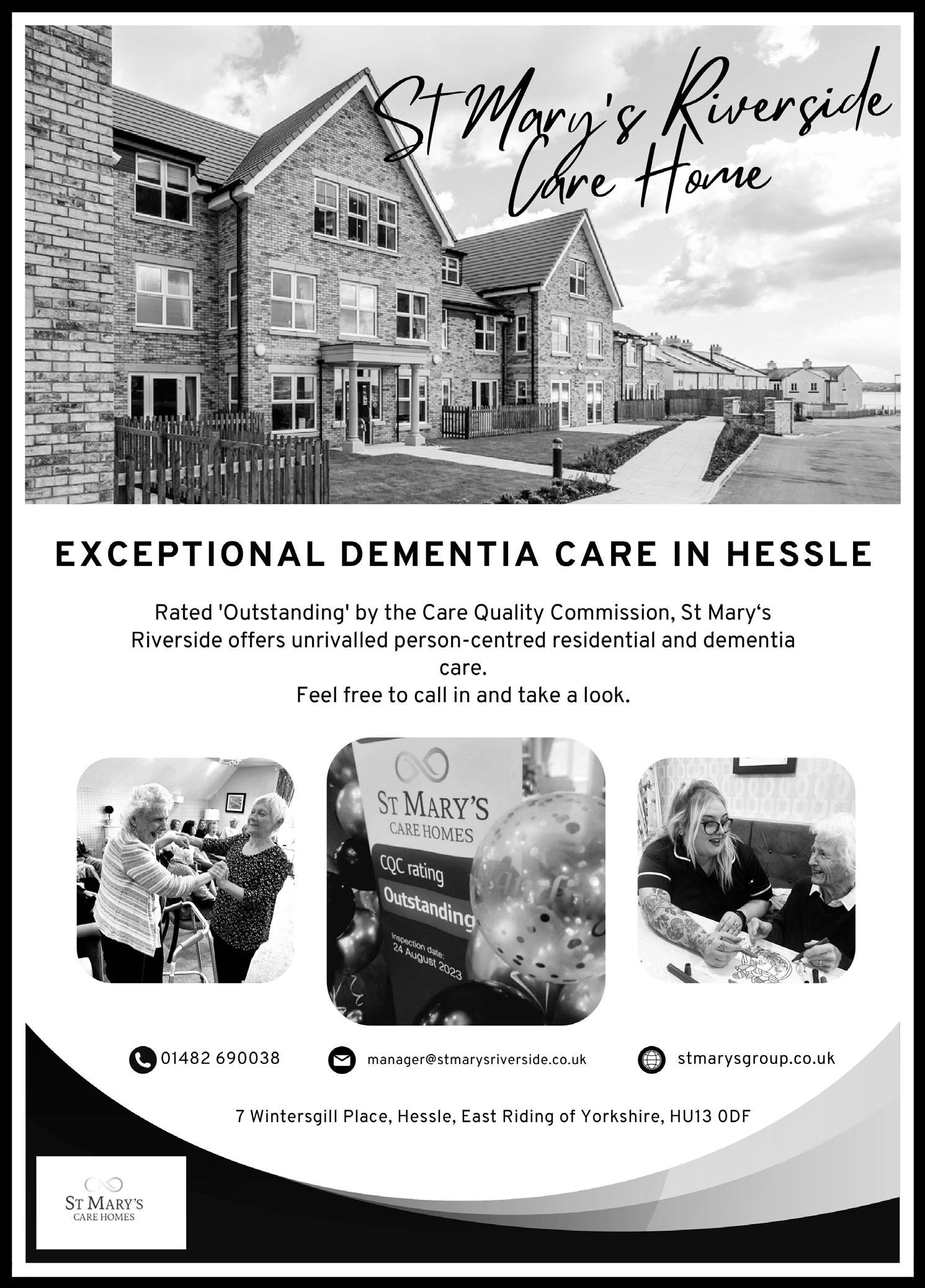
Page 14April 2024







April 2024Page 15 DISCLAIMER The editor reserves the right to decline to publish any item, to amend, shorten or hold items over to a later date. Articles do not necessarily represent the views of the PCC, the Vicar or the Editor.


















